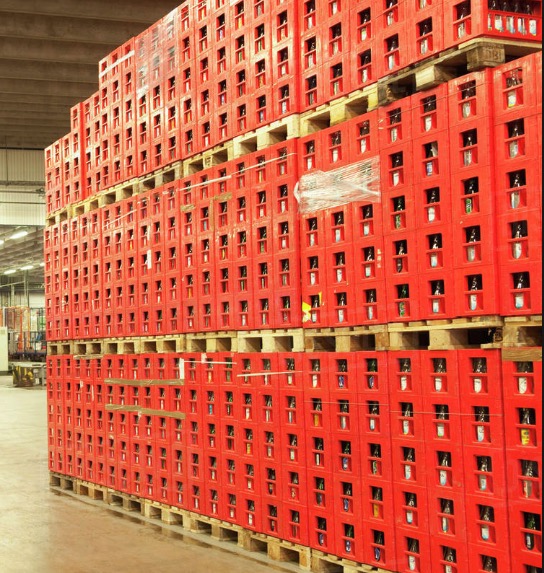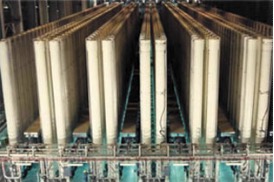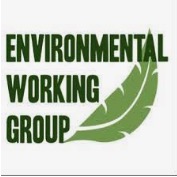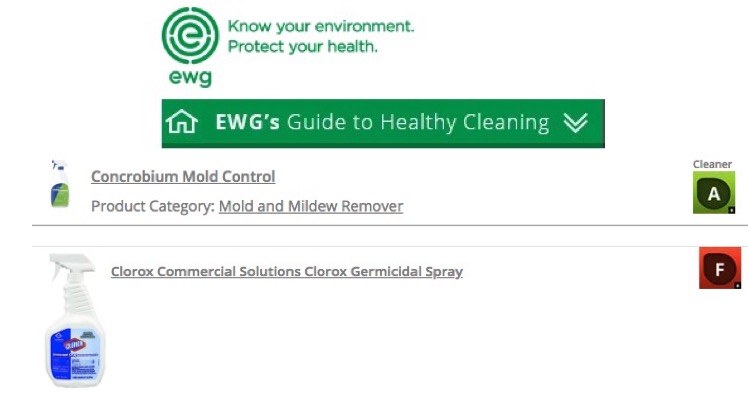So, my longtime, dear friend Jamie Ragusa sees me walking by his house last week, runs out, and practically drags me inside because he wants to show "Mr. Chemist" about this great new product he found (by doing research on the Internet, of course) that took care of the mold that infested his entire house over the summer (1).
Mr. Chemist took a look at the label and started to laugh. "What did you pay for this?" "Thirty-two dollars for a gallon jug!" Mr. Chemist started laughing harder. Here's what it is on the label of Concrobium Mold Control®:
ACTIVE INGREDIENTS
Sodium Carbonate ................. 0.05%
OTHER INGREDIENTS ..........99.95%
TOTAL ....................................100.00%
Welcome (back) to the "Green Clean Revolution," which exists to cleanse your wallet of those green rectangular pieces of paper bearing pictures of dead presidents. And one must give props to Concrobium for the company's paranormal rectangular paper extraction methodology. These guys have it going on.
Naturally, Mr. Chemist was curious about "other ingredients," since almost every chemical-containing products and foods must list the ingredients on the label. "Other ingredients" as an indication the composition of the product is not especially helpful. What else could be in there? Why the vague label? It took one phone call to Jenny, a company's customer service rep, to answer all of this. Here is (more or less) how it went:
JB: Hi. I'm very concerned about keeping chemicals out of my life so I was hoping you could answer a few questions about your mold spray.
Jenny: Of course! I'll be happy to help! (Note: Jenny may or may not have been under the influence of a psychotropic substance but she sure was enthusiastic. Hence the exclamation points.)
JB: I looked up sodium carbonate and saw that it was just baking powder, so I'm OK with that, but I'm worried about what else may be in there.
Jenny: No problem! The other ingredients are mostly water with our proprietary blend of food-grade inorganic salts!
JB: But I'm trying to eat only organic. Inorganic doesn't sound safe. What are food-grade inorganic salts?
Jenny: We don't normally reveal our formula, but we do so for people who are chemically sensitive!
JB: Oh, that's me for sure. I'm very chemically sensitive.
Jenny: No problem!!! The other ingredients are food-grade sodium bicarbonate and sodium phosphate.
JB: Are those safe?
Jenny: Yes, very! They are commonly used in foods.
JB: It's OK to eat food with chemicals in it?
Jenny: Yes, these are very safe!
JB: Thanks very much. I will go buy some of your product to treat the mold in my house.
Jenny: I'm so happy I could help!!!!!!
The bad news is that Jamie had incinerated $32.00. The good news is that he can now make the stuff himself, thanks to "Mr. Chemist." So can you. And for a whole lot less money. Let's look at what you get for your 32 bucks. Unfortunately, this requires some math (2).
Since Jenny screamed at told me that the product was mostly water I'm going to make an unsupported assumption - that the quantity of the other two chemicals is the same as the one that is listed (sodium carbonate) - 0.05%. One gallon of water weighs 8.3 pounds (3,765 grams). So in the bottle, there will be about 1.85 grams of each of the chemical. What does 1.85 grams of each chemical cost if you buy it yourself? Not that much...
- Sodium carbonate: 1 cent
- Sodium bicarbonate: 0.18 cents (18% of a penny)
- Sodium phosphate: 2.6 cents
- Water: 0 cents
- Total: 3.8 cents
I wish I owned a business like this.
- Cost to you: $32.00
- Cost to manufacturer: 3.8 cents
- Profit: $31.96 (99.85%)
- Number of bottles you can make with $32 worth of chemicals: 842

Hope you've got a big garage. And a lot of mold. Photo: Dissolve.com
The company's use of the term "proprietary formula" suggests it's some top secret history-altering invention, like enrichment of 235U from 238U by ultra-centrifugation of uranium hexafluoride to make a nuclear bomb (Manhattan Project).

Uranium centrifuge cascades. Photo: OAK RIDGE NATIONAL LABORATORY
But it's really more like this:

Mold spray formulation specialist? Photo: Laughingkidslearn.com
The proprietary formula consists of 0.05% of sodium carbonate and unknown quantities of two other seriously benign chemicals. Wooooo!
Finally, when you find people spending a whole lot of money on a "green" product how can you not think of...

And sure enough, they love the stuff, but not its alternative, bleach. Because we all know how many people get bleached to death every year.

Not to disparage Concrobium, which, despite being a bit pricey, may work perfectly well. Jamie thought so (4,5). But my past experience with EWG "science" would lead me to believe that any mold spray they approve of is more likely to grow mold rather than kill it. But the group has been known to get the science right now and then, if only by accident.
EWG chemists (if there are any) probably still believe that it is possible to turn lead into gold. At least the folks at Concrobium have figured out how to turn mold into gold.
NOTES:
(1) Our houses are on Fire Island, a barrier beach off the South Shore of Long Island, which sits in the middle of the ocean. Fire Island is mold nirvana; "dry" is not a term that we typically use.
(2) Substitute "Let's screw up some math." I have done (very simple) math calculations perhaps 50 times in various articles. If I get it right this time, it will be the first time. I count on readers to correct me. How I ever managed to make it out of high school is a mystery.
(3) The company claims that its formula is superior to bleach for getting rid of mold and environmentally superior. It's certainly safer; to be harmed by any of these chemicals you'd have to be run over by a truck carrying them while being exposed to a significant amount of bleach (especially undiluted) is not recommended. Although it seems counterintuitive that anything would be better at killing (fill in the blank) than bleach, I will assume that the company is correct, since I know just about nothing about killing mold.
(4) But he also had to scrub the hell out of the wood. Was it the scrubbing that worked? The spray? Both?
(5) I have a 1959 photo of Jamie and me standing in what looks to be our underwear in a kiddie pool filled with maybe 6 inches of water. It is unlikely that you will get to see it.




